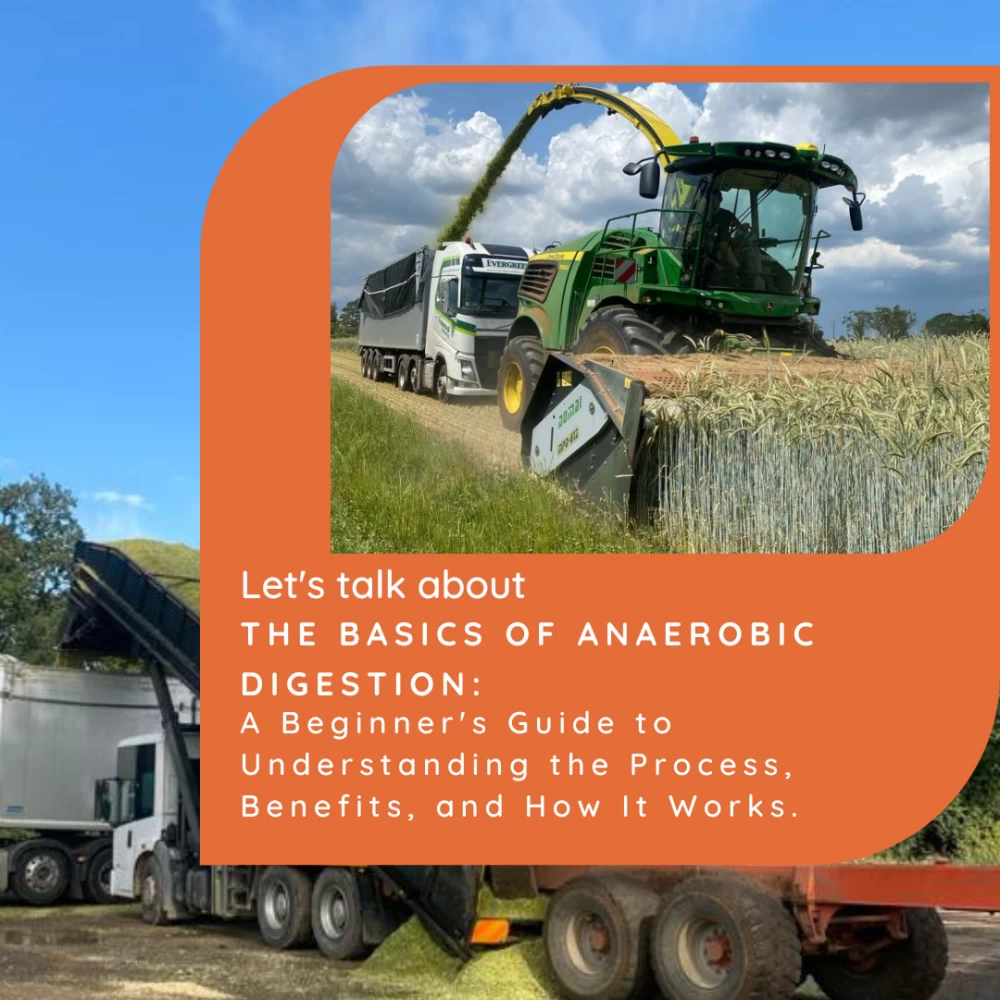
The Basics of Anaerobic Digestion:
A Beginner's Guide to Understanding the Process, Benefits, and How It Works
Introduction:
Anaerobic digestion, or AD, is a natural biological process that has gained significant attention as a sustainable solution for waste management and renewable energy production. In this blog, the team at Agri-Connect explore the basics of anaerobic digestion, its benefits, and how it works.
1. What is Anaerobic Digestion?
Anaerobic digestion is a biological process that breaks down organic materials, such as food waste, agricultural residues, and animal manure, without oxygen. It occurs naturally in environments like wetlands and the digestive tracts of animals, but it can also be harnessed in controlled environments, known as anaerobic digesters.
2. The Anaerobic Digestion Process: terminology explained.
a. Feedstock Loading: Organic waste, commonly called feedstock, is collected and loaded into the anaerobic digester. This feedstock can include food waste, crop residues, and animal manure.
b. Digestion Tanks: The digester tanks facilitate the anaerobic digestion process. These tanks are typically sealed and insulated to create the ideal conditions for the bacteria to thrive.
c. Microbial Activity: The organic waste is broken down by various microorganisms in several stages: hydrolysis, acidogenesis, acetogenesis, and methanogenesis. This process produces biogas primarily consisting of methane (CH4) and carbon dioxide (CO2).
d. Biogas Collection: The produced biogas is collected and stored for various uses, including electricity generation, heat production, and transportation fuel.
e. Digestate: The remaining slurry, called digestate, is a nutrient-rich by-product that can be used as a biofertiliser.
3. Benefits of Anaerobic Digestion:
a. Renewable Energy: Anaerobic digestion is an excellent source of renewable energy. The captured biogas can generate electricity and heat, reducing reliance on fossil fuels.
b. Greenhouse Gas Reduction: The anaerobic digestion process significantly reduces greenhouse gas emissions. By capturing and utilising methane, a potent greenhouse gas, AD helps combat climate change.
c. Waste Management: Anaerobic digestion provides an effective waste management solution by diverting organic waste from landfills. This reduces landfill usage, mitigates environmental impacts, and promotes a circular economy.
d. Soil Improvement: The digestate produced during anaerobic digestion is rich in nutrients and acts as a natural fertiliser, improving soil quality and agricultural productivity.
4. Applications of Anaerobic Digestion:
a. Public and Industrial Waste: AD can process various forms of organic waste, including food waste from restaurants, supermarkets, and households, as well as industrial and agricultural waste.
b. Agriculture and Farms: Anaerobic digestion is used in farms to manage livestock manure and crop residues, reducing odour, minimising nutrient runoff, and generating renewable energy on-site.
c. Energy Generation: The captured biogas can be used in combined heat and power (CHP) systems or as vehicle fuel, contributing to a more sustainable energy mix.
In conclusion, Anaerobic digestion is a versatile process that addresses waste management challenges and contributes to renewable energy generation and climate change mitigation. By understanding the basics of anaerobic digestion, we can create a more sustainable future by harnessing the potential of organic waste as a valuable resource.
For more information about how you can manage your waste and increase your turnover don’t hesitate to get in touch with Agri-Connect on enquiries@agri-connect.co.uk


